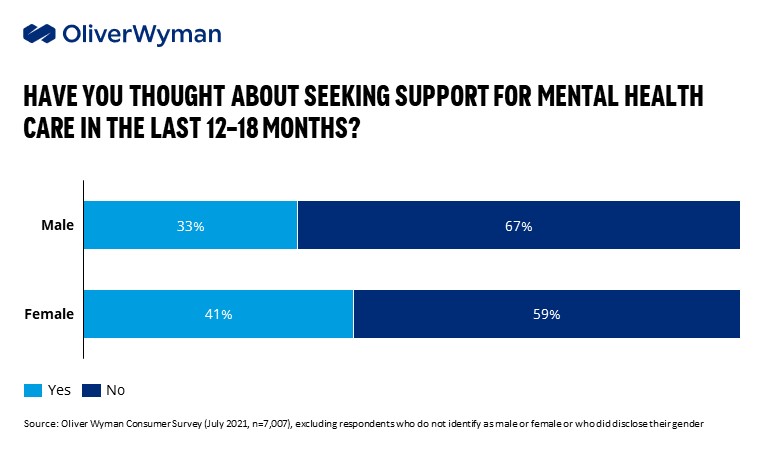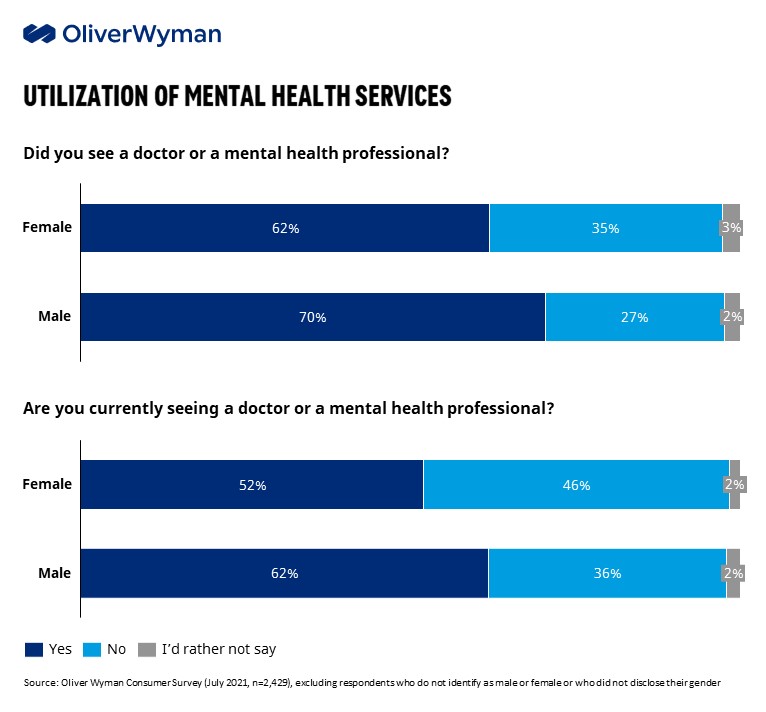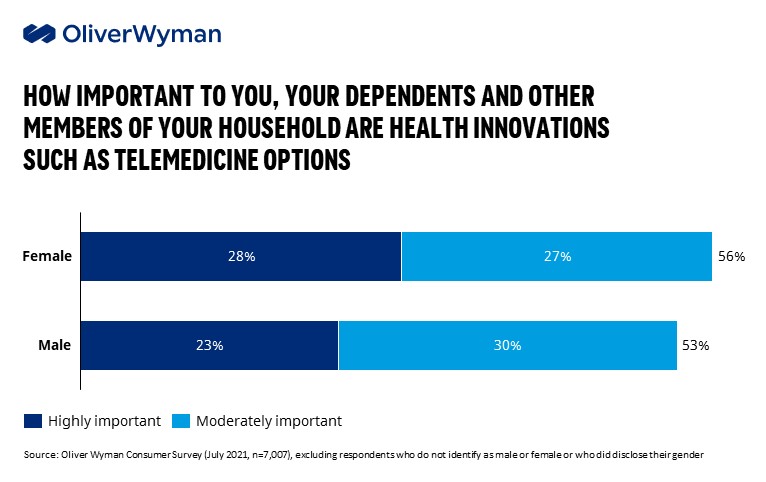The mental health crisis has been felt across nearly every demographic over the past two years. More than 30% of adults reported symptoms of anxiety and/or depression in the fall of 2021, up from 11% in 2019. There’s been a surge in young people reporting high rates of depression and anxiety, too. As a result, we are seeing a higher need for people to get care — 37% of respondents to Oliver Wyman’s 2021 Consumer Health Survey said they considered seeking mental health support during the past two years.
Digging deeper into the data, we found some interesting trends in terms of how men and women are accessing care.
Women were 20% more likely to consider seeking care than men.

Yet when it came to seeing a mental health professional, men were 12% more likely to actually get care. These findings support data we’ve seen elsewhere showing the women were more likely to skip care in general — 38% of women reported skipping preventive health screenings, compared to 26% of men, the Kaiser Family Foundation found. Some of this can be attributed to broader social and economic impacts the pandemic has had on women, including being more likely to lose their jobs and less likely to benefit from the economic recovery. Some studies also found that women were spending up to seven hours a week more than men on such things as housework and acting as a caregiver. Heading into the pandemic, women already shouldered more of burden in terms of caregiving — two out of three caregivers are women, according the Centers for Disease Control.

When weighing their care options, women placed a higher priority on the use of telemedicine than men. In fact, 25% of women reported having a virtual visit with a doctor or mental health professional compared to 18% of men.

Understanding how these trend lines and gender differences play out over the next year will be important as organizations continue to look for ways to address mental health in a more comprehensive way.


